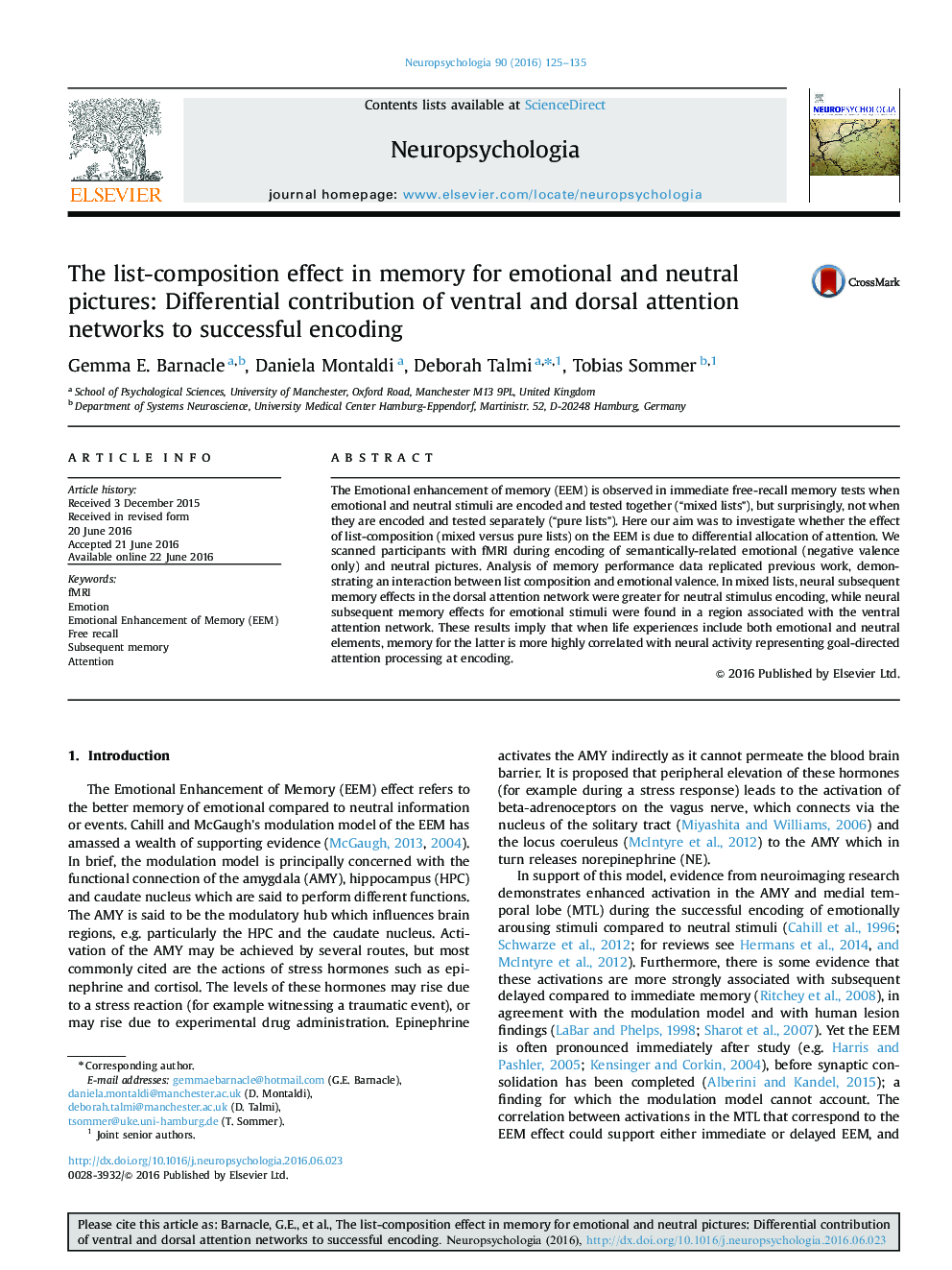| Article ID | Journal | Published Year | Pages | File Type |
|---|---|---|---|---|
| 5045373 | Neuropsychologia | 2016 | 11 Pages |
â¢Neural subsequent memory effects in the dorsal attention network were greater for neutral encoding.â¢This effect was greater in the ventral attention network for emotional stimulus encoding.â¢When life experience is emotional and neutral, neutral memory requires goal-directed attention.â¢Neural subsequent memory effects do not always correspond to memory performance.
The Emotional enhancement of memory (EEM) is observed in immediate free-recall memory tests when emotional and neutral stimuli are encoded and tested together (“mixed lists”), but surprisingly, not when they are encoded and tested separately (“pure lists”). Here our aim was to investigate whether the effect of list-composition (mixed versus pure lists) on the EEM is due to differential allocation of attention. We scanned participants with fMRI during encoding of semantically-related emotional (negative valence only) and neutral pictures. Analysis of memory performance data replicated previous work, demonstrating an interaction between list composition and emotional valence. In mixed lists, neural subsequent memory effects in the dorsal attention network were greater for neutral stimulus encoding, while neural subsequent memory effects for emotional stimuli were found in a region associated with the ventral attention network. These results imply that when life experiences include both emotional and neutral elements, memory for the latter is more highly correlated with neural activity representing goal-directed attention processing at encoding.
